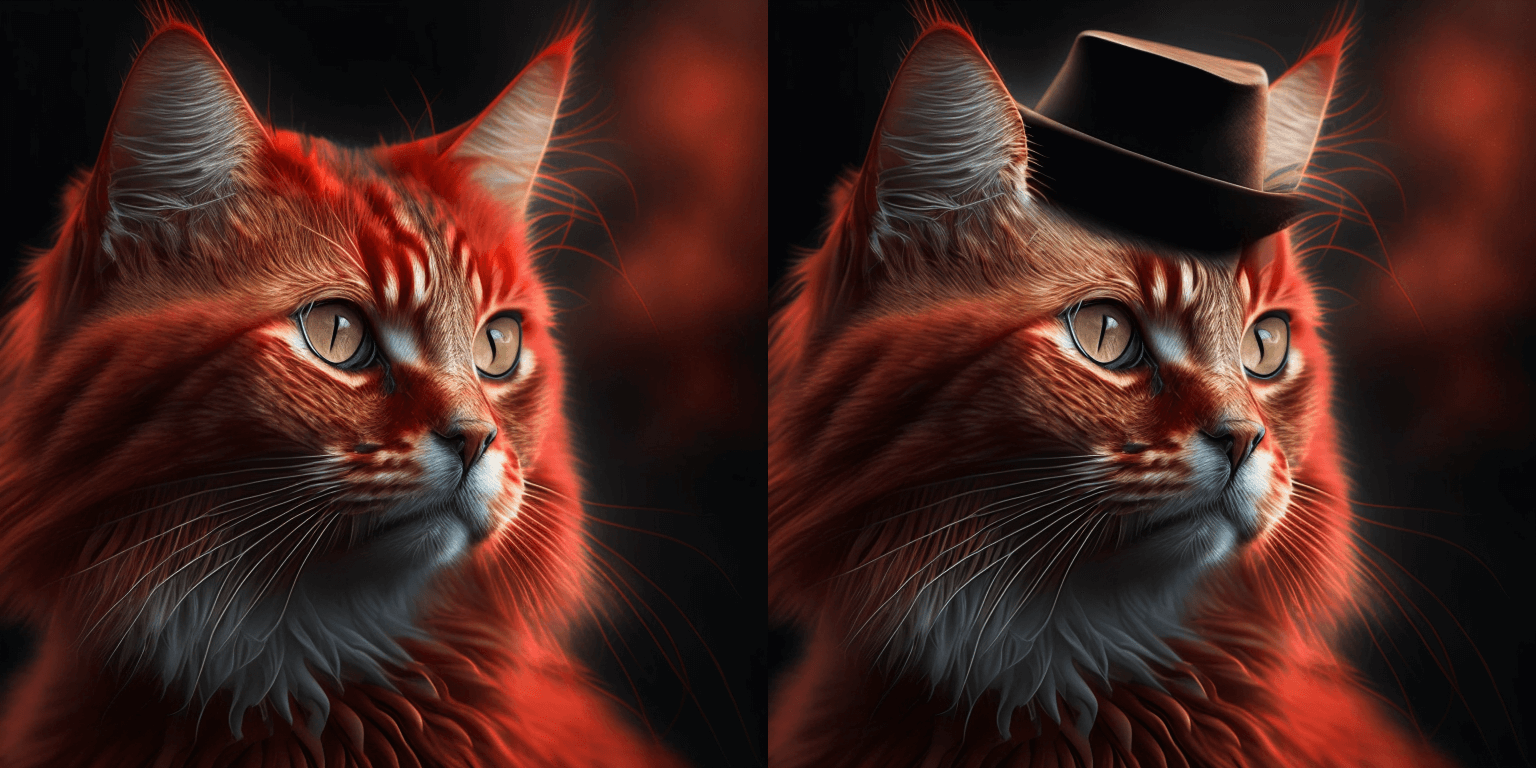File size: 5,171 Bytes
7e48094 f658a6f 7e48094 63a337a 3431784 7e48094 63a337a 770185d 63a337a 770185d 63a337a 6745411 63a337a 770185d 63a337a 770185d 63a337a |
1 2 3 4 5 6 7 8 9 10 11 12 13 14 15 16 17 18 19 20 21 22 23 24 25 26 27 28 29 30 31 32 33 34 35 36 37 38 39 40 41 42 43 44 45 46 47 48 49 50 51 52 53 54 55 56 57 58 59 60 61 62 63 64 65 66 67 68 69 70 71 72 73 74 75 76 77 78 79 80 81 82 83 84 85 86 87 88 89 90 91 92 93 94 95 96 97 98 99 100 101 102 103 104 105 106 107 108 109 110 111 112 113 114 115 116 117 118 |
---
license: apache-2.0
prior:
- kandinsky-community/kandinsky-2-1-prior
tags:
- text-to-image
- kandinsky
---
# Kandinsky 2.1
Kandinsky 2.1 inherits best practices from Dall-E 2 and Latent diffusion while introducing some new ideas.
It uses the CLIP model as a text and image encoder, and diffusion image prior (mapping) between latent spaces of CLIP modalities. This approach increases the visual performance of the model and unveils new horizons in blending images and text-guided image manipulation.
The Kandinsky model is created by [Arseniy Shakhmatov](https://github.com/cene555), [Anton Razzhigaev](https://github.com/razzant), [Aleksandr Nikolich](https://github.com/AlexWortega), [Igor Pavlov](https://github.com/boomb0om), [Andrey Kuznetsov](https://github.com/kuznetsoffandrey) and [Denis Dimitrov](https://github.com/denndimitrov)
## Usage
Kandinsky 2.1 is available in diffusers!
```python
pip install diffusers transformers
```
### Text Guided Inpainting Generation
```python
from diffusers import KandinskyInpaintPipeline, KandinskyPriorPipeline
from diffusers.utils import load_image
import torch
import numpy as np
pipe_prior = KandinskyPriorPipeline.from_pretrained(
"kandinsky-community/kandinsky-2-1-prior", torch_dtype=torch.float16
)
pipe_prior.to("cuda")
prompt = "a hat"
prior_output = pipe_prior(prompt)
pipe = KandinskyInpaintPipeline.from_pretrained("kandinsky-community/kandinsky-2-1-inpaint", torch_dtype=torch.float16)
pipe.to("cuda")
init_image = load_image(
"https://huggingface.co/datasets/hf-internal-testing/diffusers-images/resolve/main" "/kandinsky/cat.png"
)
mask = np.ones((768, 768), dtype=np.float32)
# Let's mask out an area above the cat's head
mask[:250, 250:-250] = 0
out = pipe(
prompt,
image=init_image,
mask_image=mask,
**prior_output,
height=768,
width=768,
num_inference_steps=150,
)
image = out.images[0]
image.save("cat_with_hat.png")
```

## Model Architecture
### Overview
Kandinsky 2.1 is a text-conditional diffusion model based on unCLIP and latent diffusion, composed of a transformer-based image prior model, a unet diffusion model, and a decoder.
The model architectures are illustrated in the figure below - the chart on the left describes the process to train the image prior model, the figure in the center is the text-to-image generation process, and the figure on the right is image interpolation.
<p float="left">
<img src="https://raw.githubusercontent.com/ai-forever/Kandinsky-2/main/content/kandinsky21.png"/>
</p>
Specifically, the image prior model was trained on CLIP text and image embeddings generated with a pre-trained [mCLIP model](https://huggingface.co/M-CLIP/XLM-Roberta-Large-Vit-L-14). The trained image prior model is then used to generate mCLIP image embeddings for input text prompts. Both the input text prompts and its mCLIP image embeddings are used in the diffusion process. A [MoVQGAN](https://openreview.net/forum?id=Qb-AoSw4Jnm) model acts as the final block of the model, which decodes the latent representation into an actual image.
### Details
The image prior training of the model was performed on the [LAION Improved Aesthetics dataset](https://huggingface.co/datasets/bhargavsdesai/laion_improved_aesthetics_6.5plus_with_images), and then fine-tuning was performed on the [LAION HighRes data](https://huggingface.co/datasets/laion/laion-high-resolution).
The main Text2Image diffusion model was trained on the basis of 170M text-image pairs from the [LAION HighRes dataset](https://huggingface.co/datasets/laion/laion-high-resolution) (an important condition was the presence of images with a resolution of at least 768x768). The use of 170M pairs is due to the fact that we kept the UNet diffusion block from Kandinsky 2.0, which allowed us not to train it from scratch. Further, at the stage of fine-tuning, a dataset of 2M very high-quality high-resolution images with descriptions (COYO, anime, landmarks_russia, and a number of others) was used separately collected from open sources.
### Evaluation
We quantitatively measure the performance of Kandinsky 2.1 on the COCO_30k dataset, in zero-shot mode. The table below presents FID.
FID metric values for generative models on COCO_30k
| | FID (30k)|
|:------|----:|
| eDiff-I (2022) | 6.95 |
| Image (2022) | 7.27 |
| Kandinsky 2.1 (2023) | 8.21|
| Stable Diffusion 2.1 (2022) | 8.59 |
| GigaGAN, 512x512 (2023) | 9.09 |
| DALL-E 2 (2022) | 10.39 |
| GLIDE (2022) | 12.24 |
| Kandinsky 1.0 (2022) | 15.40 |
| DALL-E (2021) | 17.89 |
| Kandinsky 2.0 (2022) | 20.00 |
| GLIGEN (2022) | 21.04 |
For more information, please refer to the upcoming technical report.
## BibTex
If you find this repository useful in your research, please cite:
```
@misc{kandinsky 2.1,
title = {kandinsky 2.1},
author = {Arseniy Shakhmatov, Anton Razzhigaev, Aleksandr Nikolich, Vladimir Arkhipkin, Igor Pavlov, Andrey Kuznetsov, Denis Dimitrov},
year = {2023},
howpublished = {},
}
``` |